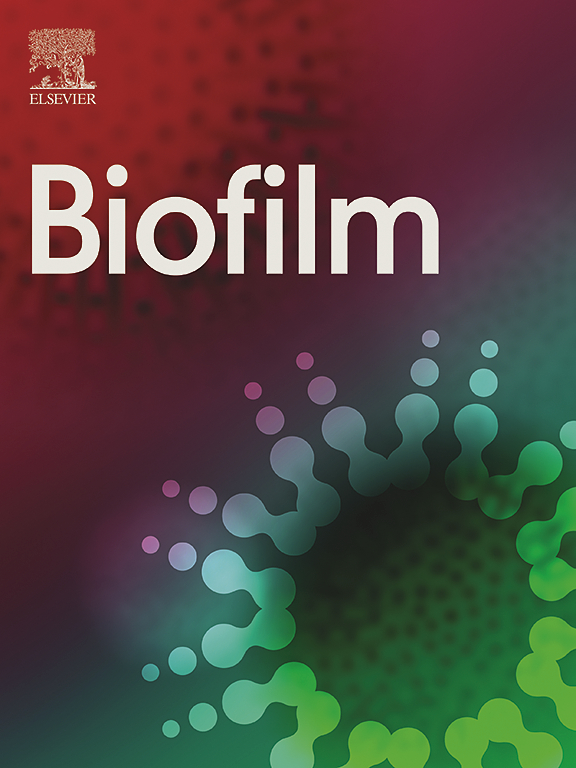Staphylococcus aureus colonizing the skin microbiota of adults with severe atopic dermatitis exhibits genomic diversity and convergence in biofilm traits
IF 4.9
Q1 MICROBIOLOGY
引用次数: 0
Abstract
Atopic dermatitis (AD) is a chronic inflammatory skin disorder exacerbated by Staphylococcus aureus colonization. The specific factors that drive S. aureus overgrowth and persistence in AD remain poorly understood. This study analyzed skin barrier functions and microbiome diversity in lesional (LE) and non-lesional (NL) forearm sites of individuals with severe AD compared to healthy control subjects (HS). Notable differences were found in transepidermal water loss, stratum corneum hydration, and microbiome composition. Cutibacterium was more prevalent in HS, while S. aureus and S. lugdunensis were predominantly found in AD LE skin. The results highlighted that microbial balance depends on inter-species competition. Specifically, network analysis at the genus level demonstrated that overall bacterial correlations were higher in HS, indicating a more stable microbial community. Notably, network analysis at the species level revealed that S. aureus engaged in competitive interactions in NL and LE but not in HS. Whole-genome sequencing (WGS) showed considerable genetic diversity among S. aureus strains from AD. Despite this variability, the isolates exhibited convergence in key phenotypic traits such as adhesion and biofilm formation, which are crucial for microbial persistence. These common phenotypes suggest an adaptive evolution, driven by competition in the AD skin microenvironment, of S. aureus and underscoring the interplay between genetic diversity and phenotypic convergence in microbial adaptation.
在患有严重特应性皮炎的成人皮肤微生物群中定植的金黄色葡萄球菌表现出基因组多样性和生物膜特征的趋同性
特应性皮炎(AD)是一种慢性炎症性皮肤病,会因金黄色葡萄球菌定植而恶化。促使金黄色葡萄球菌在特应性皮炎中过度生长和持续存在的具体因素仍然鲜为人知。本研究分析了与健康对照组(HS)相比,重度 AD 患者病变(LE)和非病变(NL)前臂部位的皮肤屏障功能和微生物组多样性。在经表皮失水、角质层水合作用和微生物群组成方面发现了显著差异。在健康对照组中,剪状杆菌更为普遍,而在 AD LE 皮肤中则主要发现金黄色葡萄球菌和卢格杜氏菌。研究结果表明,微生物平衡取决于种间竞争。具体来说,属种层面的网络分析表明,HS中细菌的整体相关性更高,这表明微生物群落更加稳定。值得注意的是,物种水平的网络分析显示,金黄色葡萄球菌在 NL 和 LE 中参与了竞争性相互作用,而在 HS 中则没有。全基因组测序(WGS)显示,来自 AD 的金黄色葡萄球菌菌株具有相当大的遗传多样性。尽管存在这种变异性,但分离菌株在粘附性和生物膜形成等关键表型特征上表现出趋同性,而这些表型特征对微生物的持久性至关重要。这些共同的表型表明,在 AD 皮肤微环境的竞争驱动下,金黄色葡萄球菌发生了适应性进化,并强调了微生物适应过程中遗传多样性与表型趋同之间的相互作用。
本文章由计算机程序翻译,如有差异,请以英文原文为准。
求助全文
约1分钟内获得全文
求助全文

 求助内容:
求助内容: 应助结果提醒方式:
应助结果提醒方式:


